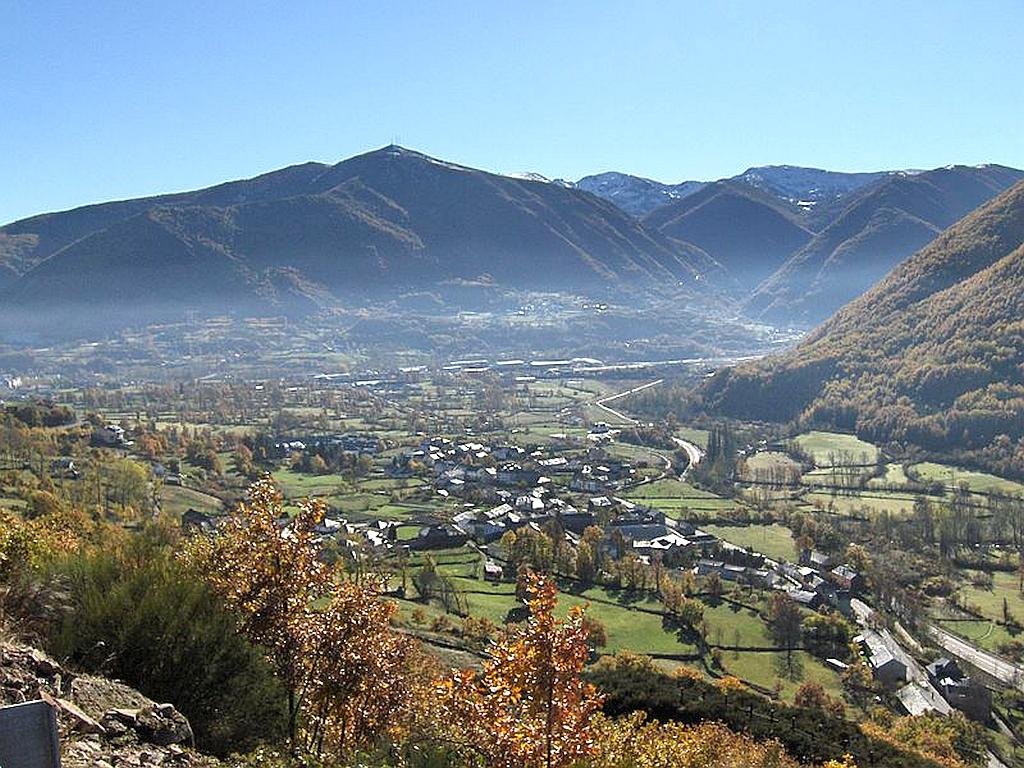- Region: Castilla y Leon
- Declared a biosphere reserve: 2003
- Surface area: almost 23,000 hectares
- Towns and villages: Villablino, Caboalles de Abajo, Villaseca, Caboalles de Arriba, Villager, Rioscuro, Sosas de Laciana, Robles de Laciana, Rabanal de Abajo, Rabanal de Arriba, Llamas, Orallo, Lumajo, El Villar de Santiago, Caboalles de Abajo, Villaseca de Laciana, Caboalles de Arriba, Rioscuro, Villager de Laciana.
Points of interest
The Valle de Laciana biosphere reserve is a very mountainous area, with altitudes ranging between 950 and 2188 m located in the northwest of the province of León, in the middle of the Cantabrian Mountains. It limits to the west and north with the Muniellos and Somiedo Biosphere Reserves (Asturias), to the east and south with those of Babia and Valle de Omaña y Luna (León) and to the southwest with Palacios del Sil (León). It is a geographically well-defined valley, traversed by the Sil River and small tributaries that divide the territory.
Although climatically it is within the Eurosiberian zone, it has a certain Mediterranean influence and the area contains mixed forests made up of oak (Quercus pirenaica and Quercus petraea), birch (Betula pendula), ash (Fraxinus angustifolia), elm (Ulmus glabra) and juniper. The iconic animal species are the endangered (almost extinct read more here) Western capercaillie (Tetrao urogallus), Iberian wolf (Canis lupus signatus) and the Cantabrian brown bear (Ursus arctos).
The evolution of the human population of the reserve has been highly dependent on its main economic activity during the last 90 years: coal mining. Until 1910, the Valley had less than 3,000 inhabitants, distributed among the 15 towns of the municipality and who lived from livestock and subsistence agriculture. Around the 20s of the last century, mining activities began on a larger scale with the construction of the railway that connects Villablino with Ponferrada, allowing the extraction of the mineral at a lower cost. Mining attracted a large working population, initially from nearby areas and later from other areas of the country and abroad. In recent times mining has ceased activities in the area due to pressure from various ecologist groups and the European member of parliament David Hammerstein.
Find a hotel close to the Valle de Laciana biosphere reserve
[booking_product_helper shortname=”valle de laciana biosphere reserve (villablino)”]
Cantabrian brown bear
The presence of the Cantabrian brown bear (Ursus arctos) in the area stands out. A species in danger of extinction and whose reproduction in the region has been frequently detected in recent decades, so the territory of the Laciana Valley biosphere reserve It is key in the conservation of the species at the national level.
More in depth information can be found at the dedicated information page for the Cantabrian brown bear here at Wildside Holidays: https://wildsideholidays.co.uk/cantabrian-brown-bear-ursus-arctos-oso-pardo-cantabrico/
Leitariegos ski station
The Leitariegos Ski Resort is located 15 km from the town of Villablino, on the base of Cueto Arbás, the first peak that exceeds 2,000 meters of altitude in the Cantabrian mountains (from the West). The station’s maximum elevation is 1,830 meters, while the minimum elevation is 1,513 meters. The station has 10 slopes (5 red, 4 blue and 1 green) and 6 lifts (2 three-seater chairlifts, 1 two-seater chairlift, 1 ski lift and 1 telebaby), with a capacity of 5,160 passengers / hour.
Access to Leitariegos Station is from Caboalles de Abajo, continuing towards Cangas del Narcea. It can also be accessed from the Asturian side of the mountains. The website is only in Spanish: https://www.leitariegos.net/
Information / visitor centres
Centro de Interpretación del Espacio Natural Alto Sil (Centro del Urogallo)
This is the main information and interpretation centre for the Valle de Laciana biosphere reserve and is an obligatory visit if you want to find out about the fauna and flora of the area. It contains various audio visual displays and exhibitions detailing local wildlife with special emphasis on the Cantabrian brown bear and the Cantabrian grouse (Urogallo in Spanish). Information about the geology and history of the area is also available.
The Casa del Parque del Espacio Natural Ancares-Alto Sil is located in the town of Caboalles de Arriba near Villablino. The best way to get there is by taking the CL-626 at the Barrios de Luna reservoir, leaving the A-66, towards Villablino (about 7 km). It can also be accessed from Ponferrada on the the CL-631 and from León by the CL-626 to La Magdalena then the LE-493 towards Villablino.
Museo Etnográfico “Sierra Pambley”
Located on Avenida la Brañina, 13 in the town of Villablino, this ethnografic museum showcases a traditional wealthy (almost aristocratic) household of the area. An interesting look back in time as to how the richer families lived back in the days of the coal mines. The website (in Spanish) is here: https://www.sierrapambley.org/museo
The official website (in Spanish) for the Valle de Laciana biosphere reserve is: http://lacianareservadelabiosfera.com/
Iberia Nature Forum
Struggling with identifying those bugs and beasties? Why not check out the Iberia nature Forum!
Discover the Iberia Nature Forum – Environment, geography, nature, landscape, climate, culture, history, rural tourism and travel.
I’ve been living in this lovely area of Western Andalucia for the last 20 years or so and dedicate most of my time to the running of English language tourist information websites for the towns of Cádiz, Ronda, Grazalema, the famous or infamous Caminito del Rey, and also Wildside Holidays, which promotes sustainable and eco-friendly businesses running wildlife and walking holidays in Spain. My articles contain affiliate links that will help you reserve a hotel, bus, train or activity in the area. You don’t pay more, but by using them you do support this website. Thankyou!
